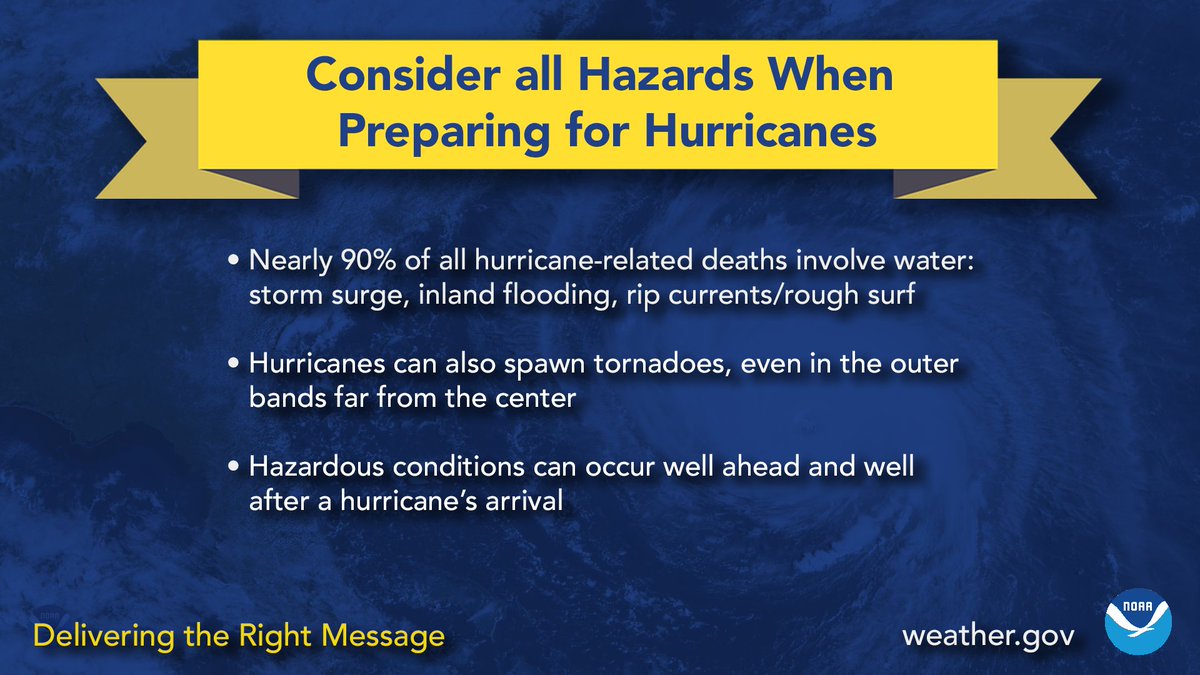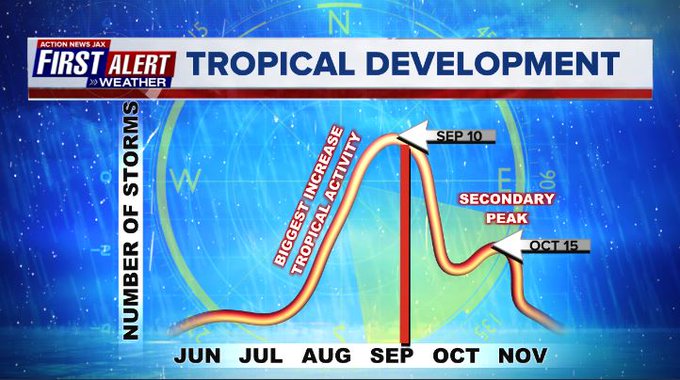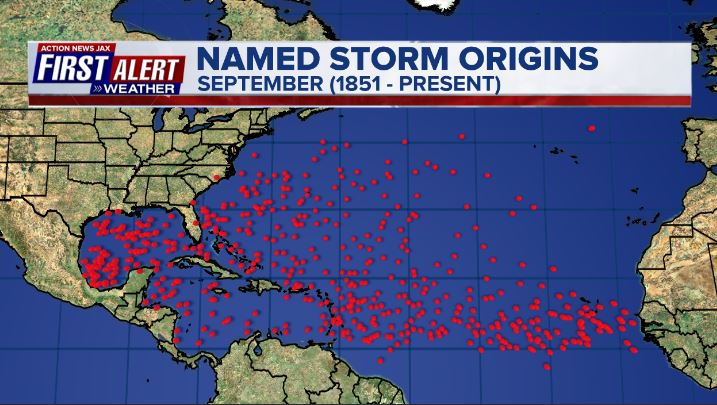Jacksonville, Fl. — The “Buresh Bottom Line”: Always be prepared!.....First Alert Hurricane Survival Guide... City of Jacksonville Preparedness Guide... Georgia Hurricane Guide.
STAY INFORMED: Get the * FREE * First Alert Weather app
FREE NEWS UPDATES, ALERTS: Action News Jax app for Apple | For Android
WATCH “The Ins & Outs of Hurricane Season”
WATCH “Preparing for the Storm”
READ the First Alert Hurricane Center “Survival Guide”
***** ALWAYS CHECK & RE-CHECK THE LATEST FORECAST & UPDATES! *****
REMEMBER WHEN A TROPICAL STORM OR HURRICANE IS APPROACHING: Taping windows is *NOT* helpful & will not keep glass from breaking... & realize the cone is the average forecast error over a given time - out to 5 days - & *does not* indicate the width of the storm &/or damage therefore do not become fixated on the center of a tropical system.
The peak of the hurricane season is Sept. 10th with a mini peak in mid Oct.:
“Ida” summary in the “Buresh Blog” * here *.... past tropical systems similar to Ida * here *.
Areas to watch:
(1) Last Larry advisory issued Sat.
(2) the Western Gulf
(3) tropical waves headed west off the coast of Africa
(4) possible tropical development over the SW or W Atlantic later this week.
(1) Larry: over the NW Atlantic making landfall on Newfoundland about 11:45pm EDT Fri. (the first Newfoundland hurricane since “Igor” in 2010). Larry quickly became post-tropical Sat. morning over the Labrador Sea & then became absorbed by/merge with a large extra-tropical low bringing heavy snow to Greenland through Monday!
Summary:
“Larry” was upgraded last Wed. becoming a hurricane early Thu. & became a Cat. 3 Fri. evening - the 3rd “major” hurricane of the season. 1969, 2004 & 2005 were the only other seasons since the mid 1960s to have as many as three Cat. 3+ hurricanes by Sept. 3rd. By Wed. afternoon - 1 week after its inception, Larry was down to a Cat. 2 hurricane & lashing Bermuda with tropical force winds Thu. Larry is the longest-lived Atlantic hurricane since “Dorian” in 2019.
Despite the hurricane’s considerable distance from any mainland, Larry was large enough to push an easterly swell to the east coast of the U.S. enhancing the rip current risk into Sat. The eye of the hurricane reached Jacksonville’s latitude - about 30 degrees N - Wed.night but 1,200+ miles to the east.
Larry was the 5th hurricane of the Atlantic season... the 4th just since Aug. 18th!.... & the first time three Atlantic Basin hurricanes have formed within the period from Aug. 18th to Sept. 2nd.
Dr. Phil Klotzbach reports only twelve or more tropical storms have occurred within the Atlantic Basin by Sept. 1st 5 times: 1995, 2005, 2011, 2012 & 2020. (Of course, some credit to far better “detecting” means since the advent of satellite photos in the 1960s).
For right now, the Bermuda High across the Atlantic is displaced to the east & northeast through at least the middle or so of Sept. - important for any potential long track tropical systems coming out of the deep tropics. *But* there are indications that the Bermuda High will shift back west & a little south while becoming stronger again as we head toward the last 10-12 days or so of Sept. This development will be key for a potential long track hurricane later this month.
(2) A tropical wave near & over Central America & the Yucatan Peninsula moved over the SW Gulf of Mexico & quickly organized Sun. morning & was upgraded to “Nicholas”. We (folks along the coast of NE Mexico & SE Texas + SW Louisiana) need to be especially wary of this storm. If Nicholas stays offshore long enough & far enough, we could rather suddenly be dealing with a formidable hurricane. Shear is strong for the moment - 35+ mph out of the west/southwest - but is likely to weaken over the next few days. Forecast models indicate a possible landfall as early as Mon./Tue. near Brownsville, Texas but some forecast cycles indicate a later landfall farther north &/or a storm hugging the Texas coastline. Ultimately... how strong this might - or might not - be will largely depend on how much time the disturbance can remain reasonably far offshore. This is one to watch in Mexico & S. Texas! And independent of how strong Nicholas might be or not be, a lot of rain will fall this week over parts of Texas & Louisiana with the potential for severe flooding.
Nicholas is the 14th named storm of this busy hurricane season. From Dr. Phil Klotzbach: “Only 4 other years in satellite era (1966 onwards) have had 14+ named storms by 12 September: 2005, 2011, 2012, 2020″.




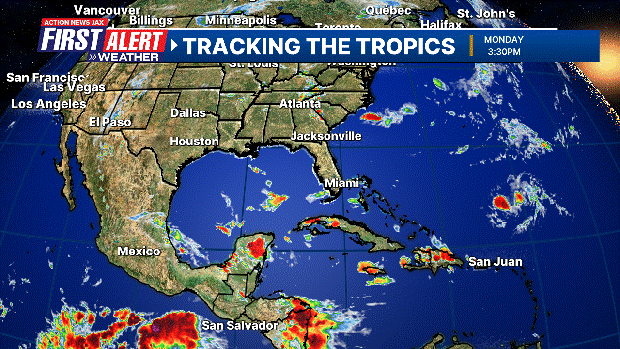



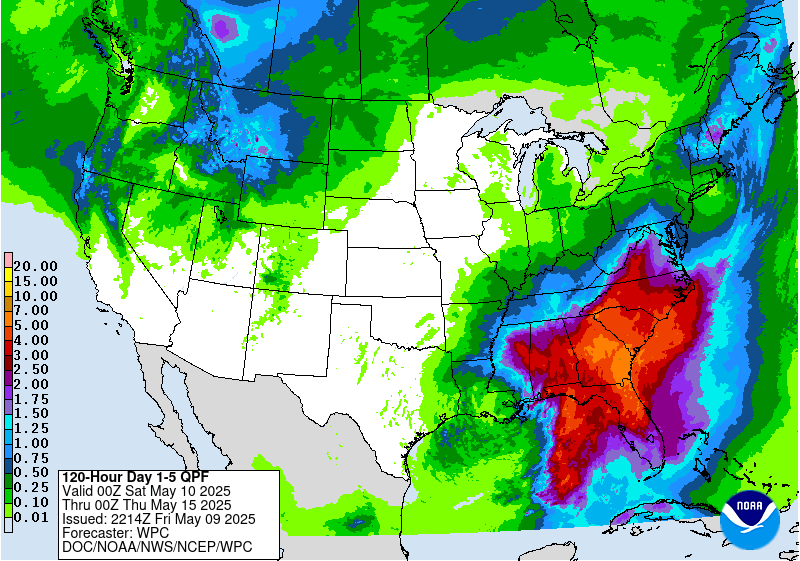
(3) Multiple tropical waves are marching west off the coast of Africa as one would expect near the peak of the season. We’ll likely have at least one new depression then tropical storm over the Eastern Atlantic over the next few days. This initial wave should struggle to make much progress west across the Atlantic, but another tropical wave to follow has a much higher chance to make it across the Atlantic. The latter wave could be a hurricane approaching the Caribbean mid to late next week - approximately Sept. 22-25th.
(4) And forecast models continue to indicate *possible* tropical “activity” over or near the Western or SW Atlantic late in the upcoming week. Still very early on this potential but, of course, something to watch. Forecast models have generally trended north on this disturbance to east of the Carolina’s (vs. east of Fl. the past week), but there will probably be further “corrections” in the future. If the system has enough time offshore & over water, a hurricane is not out of the question for the Carolina’s.
The peak of the hurricane season (Sept. 10) is here & ocean temps. remain “fit” to help maintain tropical cyclones.
Sea surface temps. across the Atlantic are now near to above avg. across much of the basin (2nd image below) & - even more importantly - deep oceanic heat content (which helped “feed” Ida) is impressive & the “equivalent oceanic heat content” - namely depth averaged temperature in the upper 300 m (~984 feet) - is even more impressive all the way from Africa to the Gulf of Mexico. Such an ocean water temp. pattern is conducive to long track deep tropical Atlantic tropical cyclones & can lead to a more favored regime for rapid intensification cycles. From an AMS research paper in ‘08 Mainelli, DeMaria, Shay, Goni: “Results show that for a large sample of Atlantic storms, the OHC variations have a small but positive impact on the intensity forecasts. However, for intense storms, the effect of the OHC is much more significant, suggestive of its importance on rapid intensification. The OHC input improved the average intensity errors of the SHIPS forecasts by up to 5% for all cases from the category 5 storms, and up to 20% for individual storms, with the maximum improvement for the 72–96-h forecasts. The statistical results obtained indicate that the OHC only becomes important when it has values much larger than that required to support a tropical cyclone.” More recent research continues to indicate similar correlations.
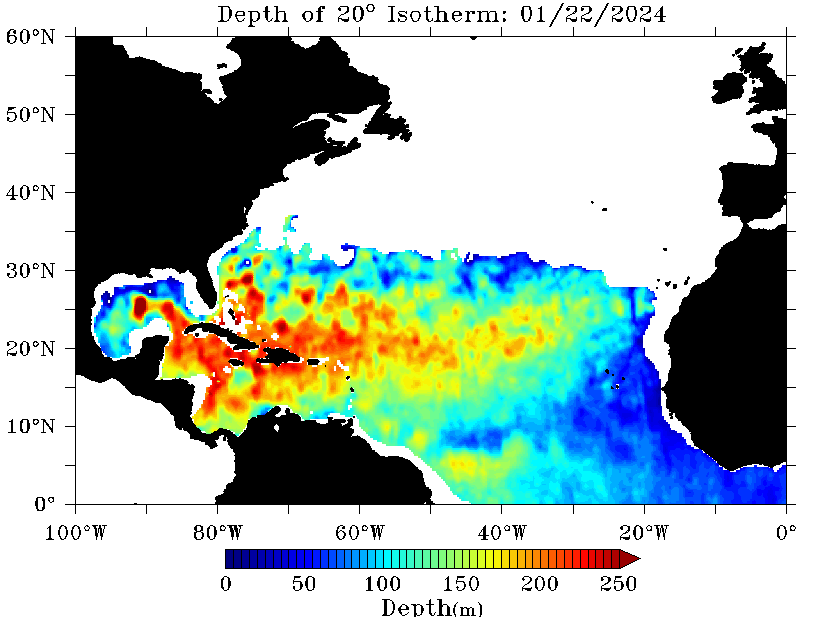

September is historically the prime month for tropical cyclones across the Atlantic Basin:


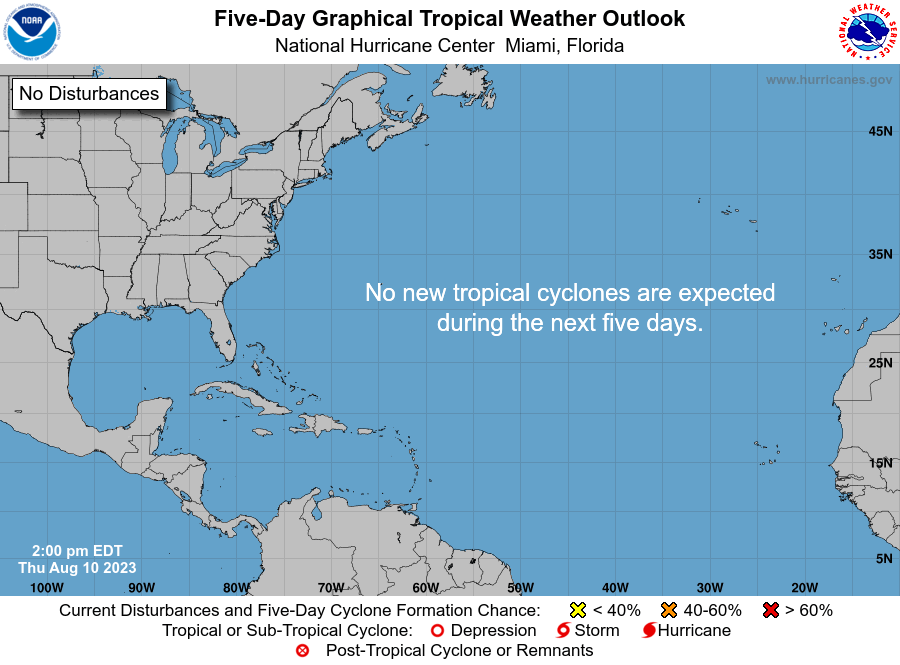
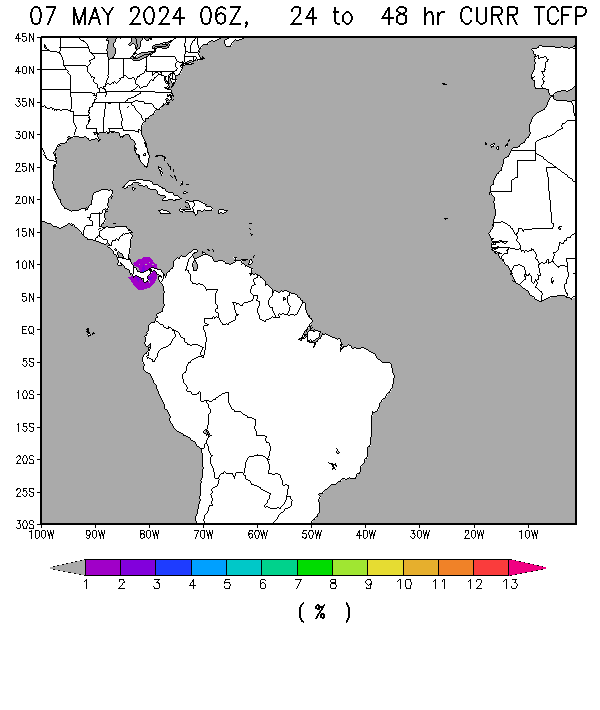
Saharan dust. Dry air - yellow/orange/red/pink. Widespread dust is indicative of dry air that can impede the development of tropical cyclones. However, sometimes “wanna’ be” waves will just wait until they get to the other side of the plume then try to develop if everything else happens to be favorable. In my personal opinion, way too much is made about the presence of Saharan dust & how it relates to tropical cyclones.
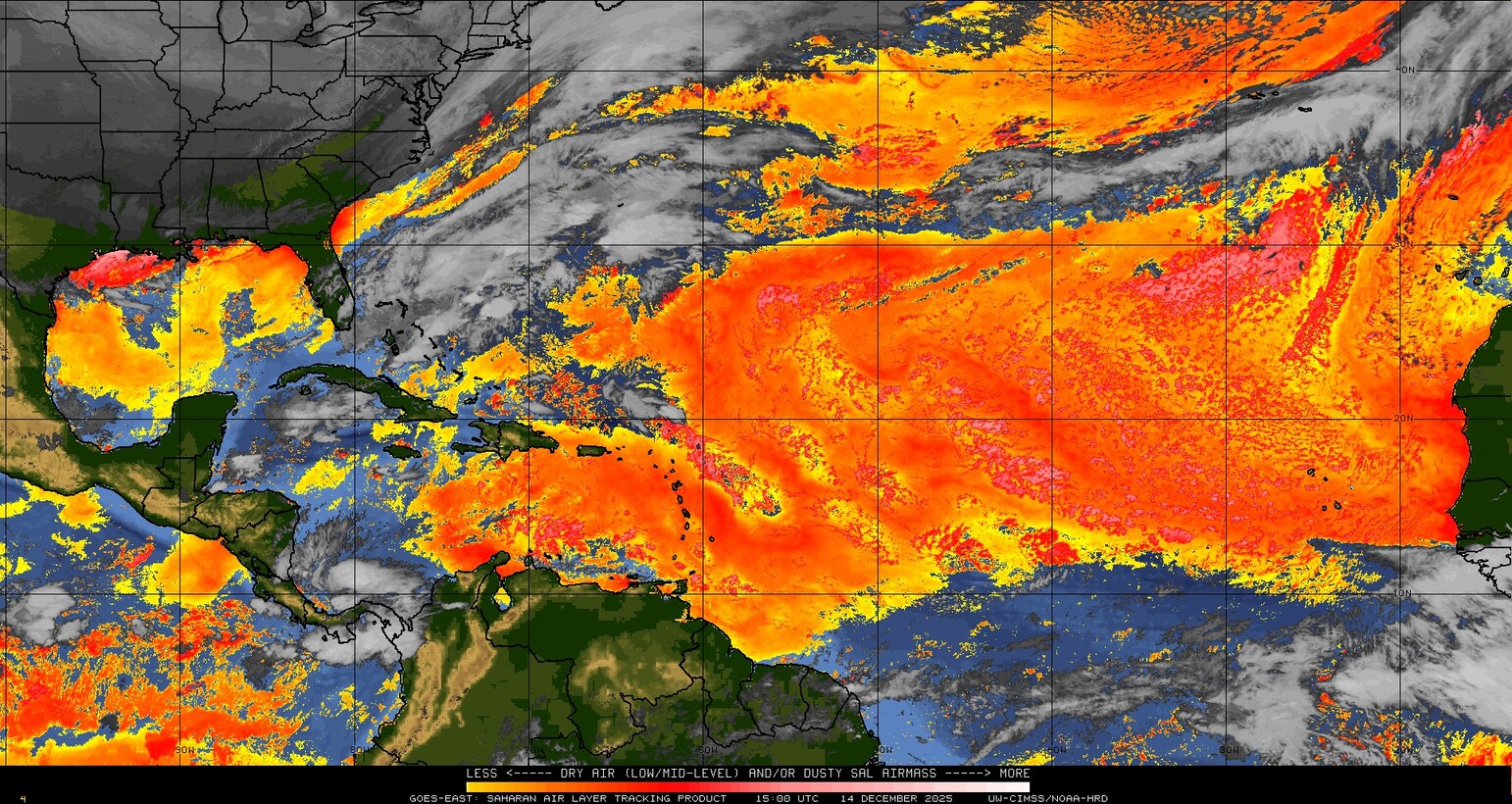
2021 names..... “Odette” is the next name on the Atlantic list (names are picked at random by the World Meteorological Organization... repeat every 6 years... historic storms are retired (Florence & Michael in ’18... Dorian in ’19 & Laura, Eta & Iota in ‘20). Last year - 2020 - had a record 30 named storms. The WMO decided beginning in 2021 that the Greek alphabet will be no longer used & instead there will be a supplemental list of names if the first list is exhausted (has only happened twice - 2005 & 2020). More on the history of naming tropical cyclones * here *.


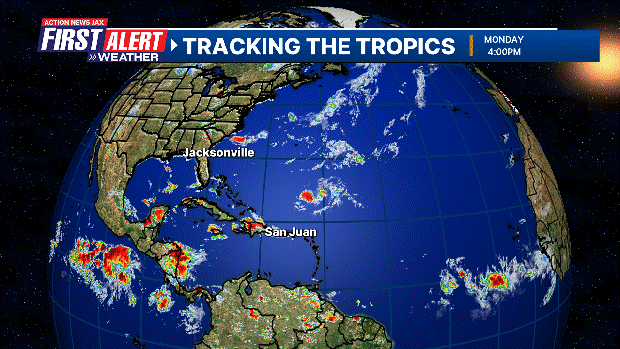


East Atlantic:





Mid & upper level wind shear (enemy of tropical cyclones) analysis (CIMMS). The red lines indicate strong shear:
Water vapor imagery (dark blue indicates dry air):

Deep oceanic heat content continues to increase across the Gulf, Caribbean & deep tropical Atlantic & has become pretty impressive from the Central/NW Caribbean into the Gulf of Mexico:

Sea surface temp. anomalies:


SE U.S. surface map:
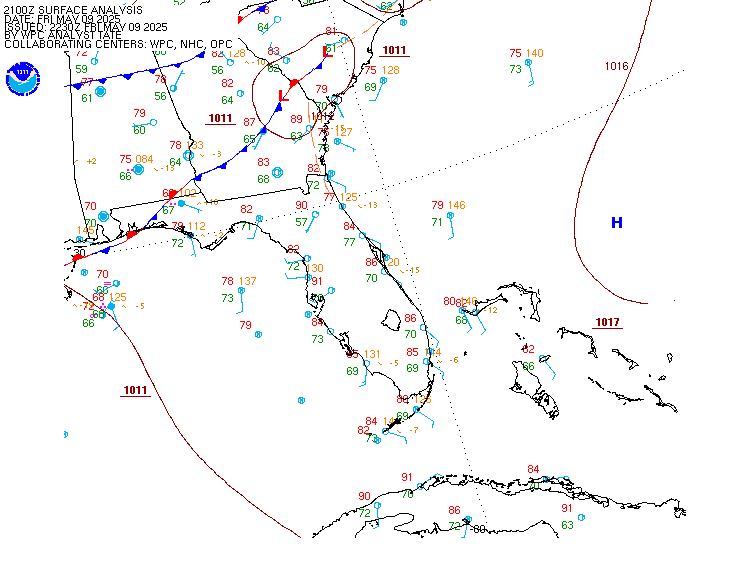
Surface analysis centered on the tropical Atlantic:
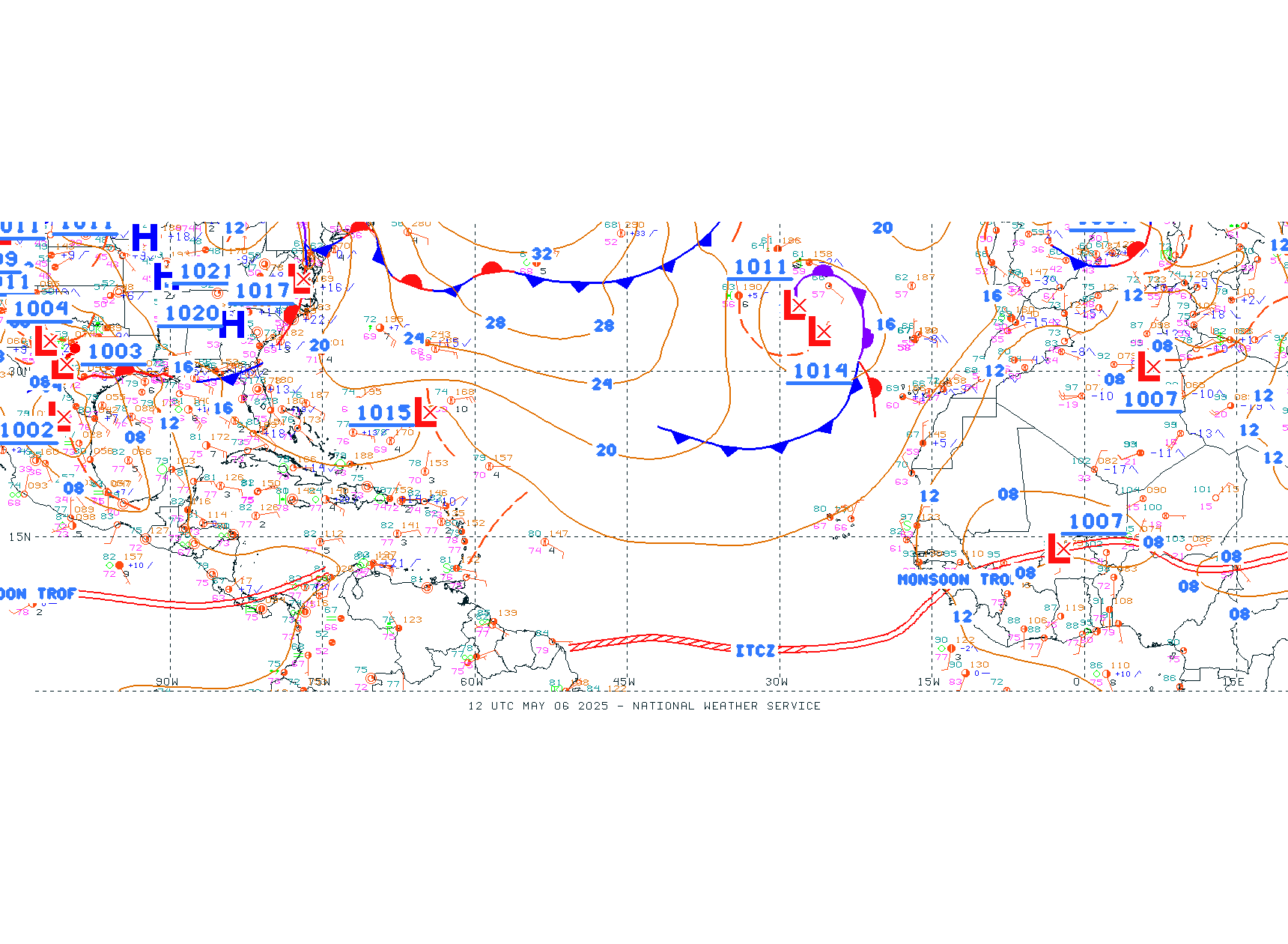
Surface analysis of the Gulf:

Caribbean:

GFS wave forecast at 48 & 72 hours (2 & 3 days):
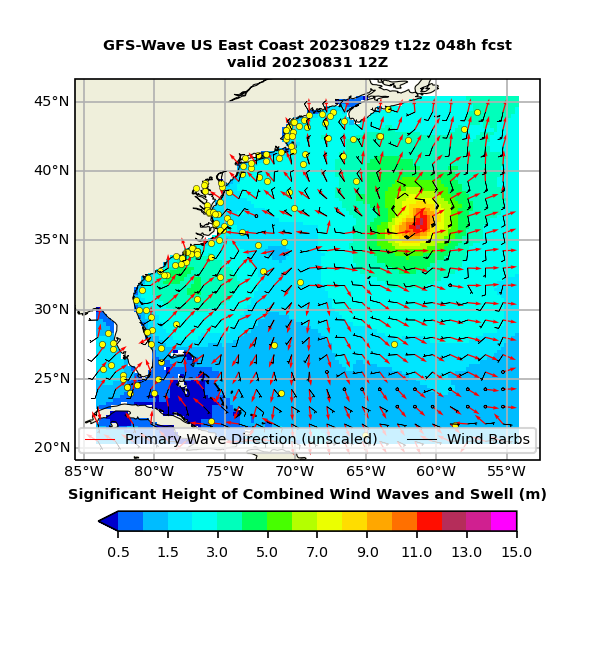

Atlantic Basin wave period forecast for 24, 48 & 72 hours respectively:
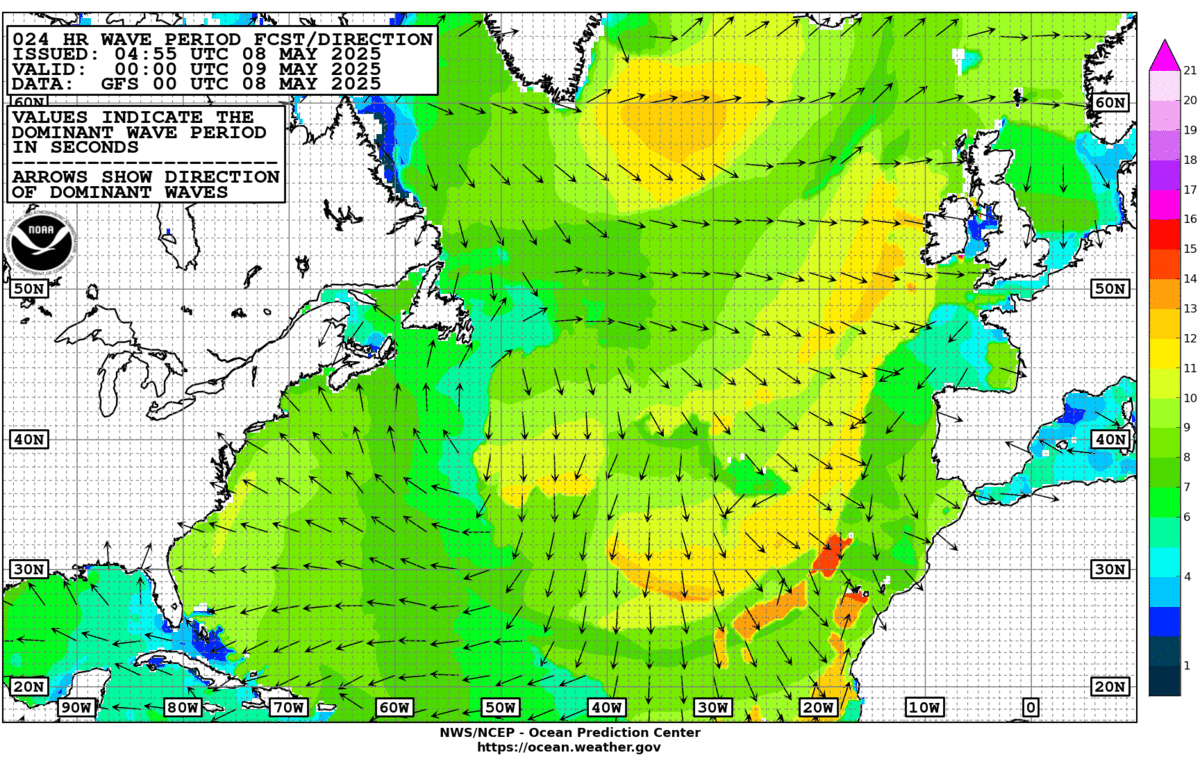
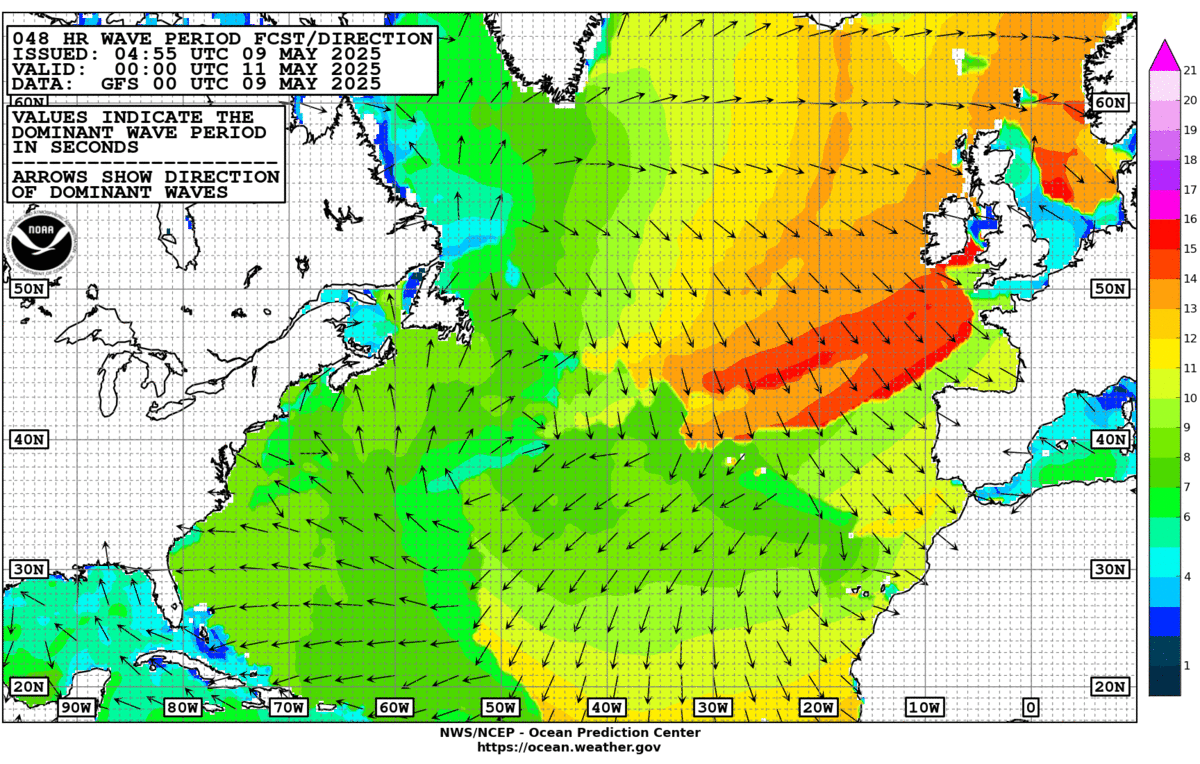
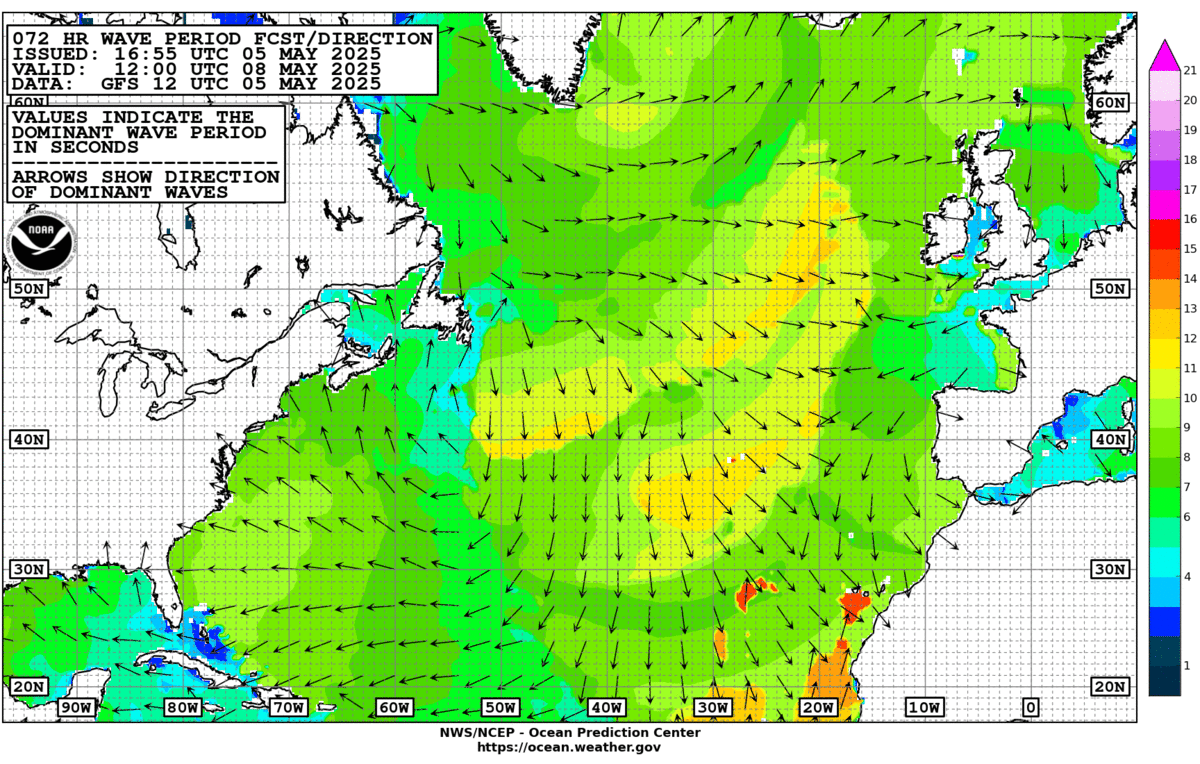
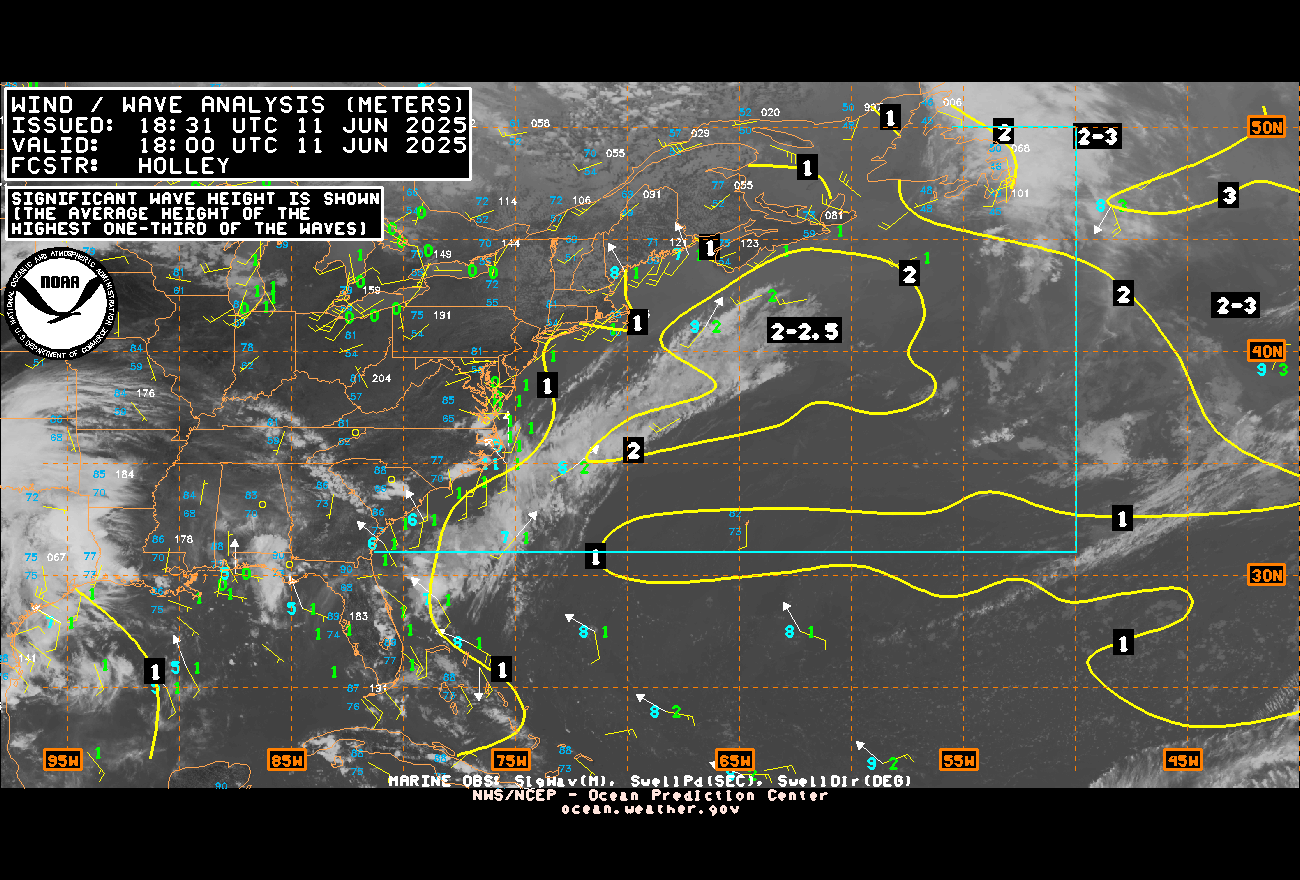
The East Pacific:


West Pacific IR satellite:

Typhoon “Chanthu” has moved just offshore of Taiwan & is headed for China while weakening:

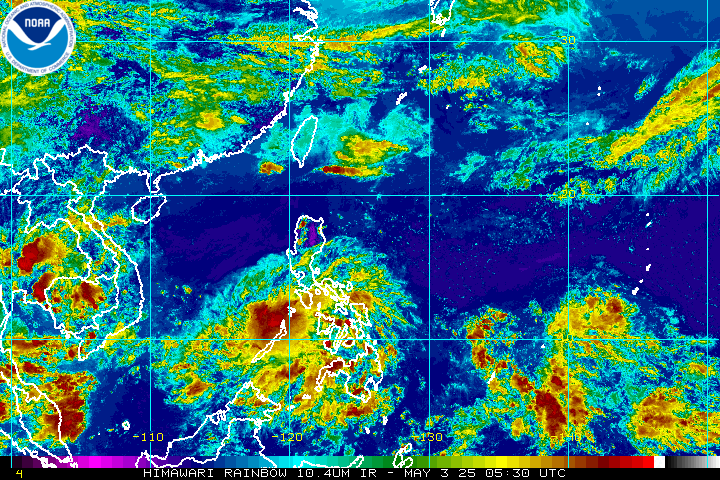
Global tropical activity:
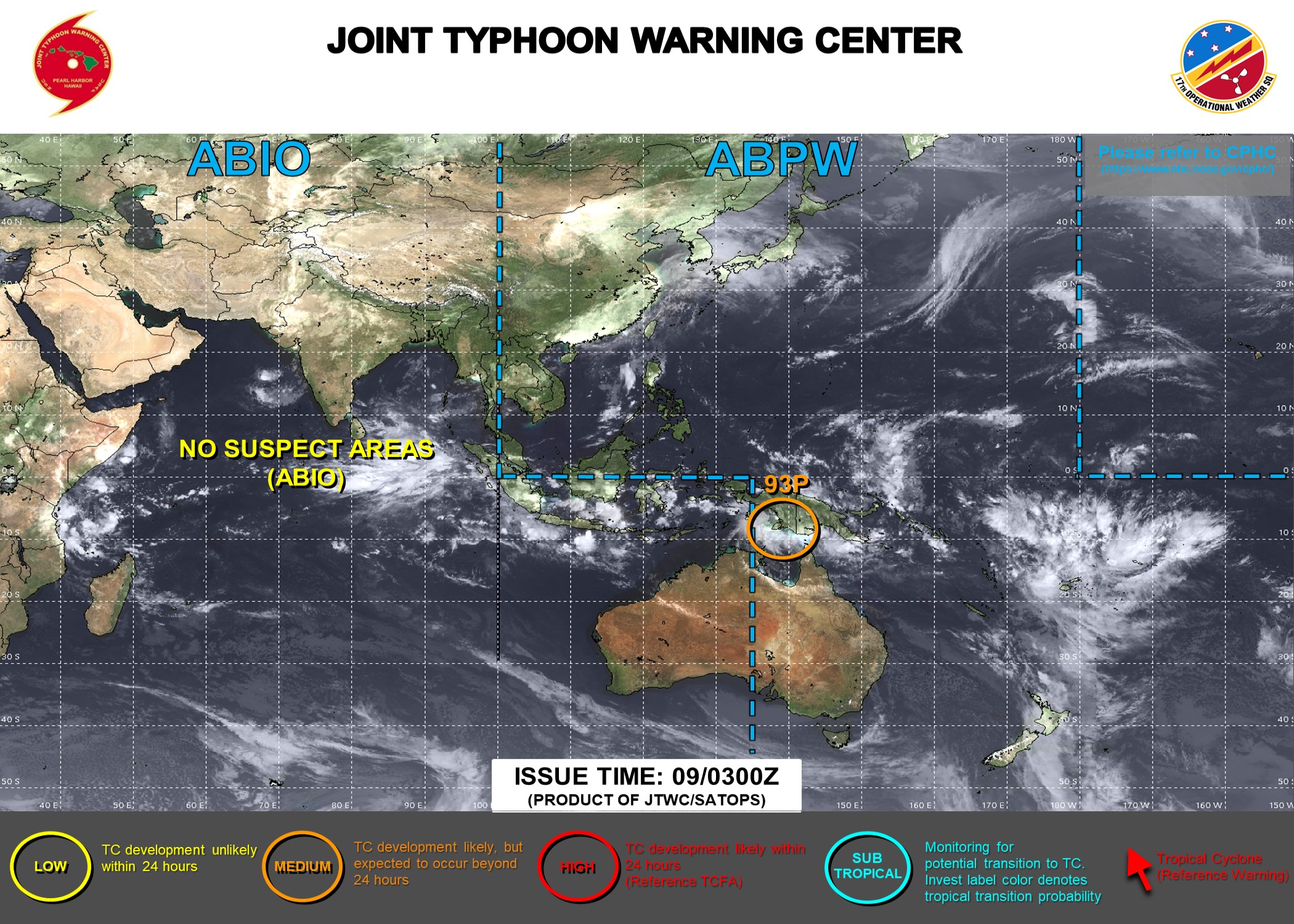
Cox Media Group


